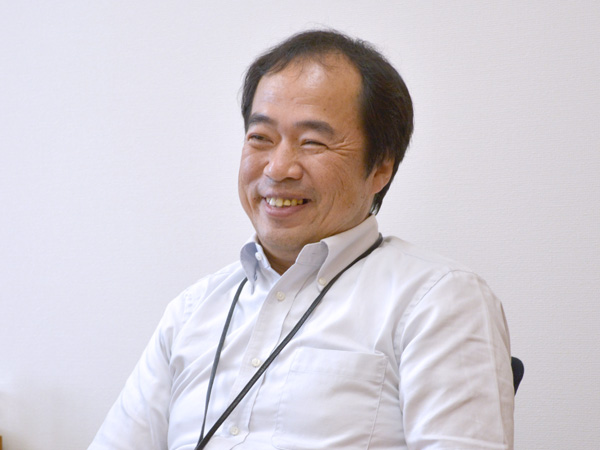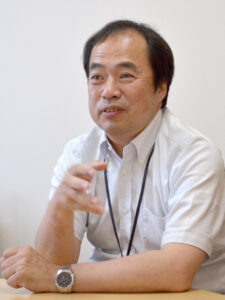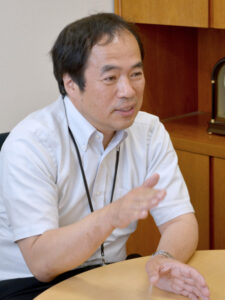Senior Fellow
Hakaru Mizoguchi
What is currently the most important item for Gigaphoton from a technology standpoint?
I would have to say creating an fully functional, HVM (high volume manufacturing) ready EUV light source. But ArF lasers, of course, will still be required for mid to lower layers. So it’s clear we also need to focus on continuing to evolve the ArF technology as well. Our goal to offer the most effective HVM technology for both EUV and ArF.
What is Gigaphoton’s biggest challenge in technology development?

Gigaphoton got its start from a hand full of people who where inspired to develop Excimer laser technology. But we had a team of highly motivated and capable Engineers who were able to pull it off and deliver a production quality laser to the market. I think one of our biggest challenge is making sure we continue to maintain and attract high level Engineers. Creating an environment where the newer generation of Engineers have the freedom to explore and develop new ideas will be key to our growth and success for the future.
Another challenge we face is external networking. Today we have active partnerships with Universities and corporate research laboratories primarily within Japan to investigate new concepts and technologies. However, as we move forward we need to further expand our network of partnerships to other countries. Furthermore, we need to spend even more energy in perfecting our own unique technologies and work with global third party sources for other technologies. Of course we can do everything ourselves if we wanted to, but we cannot be truly competitive in both time-to-market and cost effectiveness unless we are selective of the technologies we invest our own resources in.
There are several possibilities when we talk about the next generation semiconductor manufacturing technologies. What are your thoughts on the future of our industry’s technology?
Over the years this industry has experienced transitions from one technology to another, but I think the next era it will be more about technologies co-existing with, rather than succeeding, each other. In fact you can say we’ve already stepped into such an era, but I think it will be come much more evident going forward. Part of the reason why is because the kinds of chips in demand today are based on a broader range of devices than in the past. Until recently the PC was the main driver in the industry, but today we also have a variety devices such as smartphones and tablets. I’m sure in the future there will be more.
What are Gigaphoton’s technical priorities?
We can’t lose focus on winning in the lithography space. Litho is not only important to our business, but it is also one of the the key technologies sustaining the industry. But, at the same time we have to also think ahead and prepare ourselves to win in the future. We’re definitely not standing still when it comes to identifying and adopting technologies that may be niche today, but one day may become main stream. I would say we’re quite ambitious when it comes to competing in technology.
What is Gigaphoton’s biggest technical strength?

Gigaphoton is relatively quick when it comes to applying new ideas. This by itself may not distinguish us from a typical venture company, but we have a unique balance of agility and persistence that I think sets us apart from others. We put in a lot of care and effort into investigating, developing and maturing a new idea. But at the same time we are also quick to move on if we determine the idea or technology doesn’t meet our customers’ needs.
For example, today we are using CO2 lasers and droplets for our EUV light source, but this wasn’t our initial choice of technologies. From 2002 through 2007 we spent close to 5 years trying to perfect other technologies before arriving at what we have today. Likewise, our current Excimer laser technology was developed back in 1998, and prior to this we also spent many years trying to develop and perfect other technologies. It is critical to our business that we offer unique technologies, but to be competitive in doing so, we have to be 3 to 4 times quicker and more efficient than others in validating every possible ideas. Gigaphoton is able to do this, and as a result we have continued to survive and grow in our industry. This is the key strength of Gigaphoton.
What kinds of processes did you implement to be 3 or 4 times quicker?

We basically used our heads (laugh). What I mean is we’ve become quite proficient in simulating outcomes based on experience and knowledge accumulated over the years. This is important because we obviously don’t have the time or resources to actually experiment with every single technology we need to evaluate, so our speed and agility really depends on how well and how quickly we are able to accurately simulate outcomes in our heads.
That said,however, one other very important process we value deeply is ensuring that we create an environment where every Engineer feels comfortable expressing any opinion (good or bad) – this is very important, but often difficult to achieve in many companies/cultures. In order to create something new and unique, you have to be open to everyone’s thoughts and ideas, especially non-experts. The thing about technology is that as Engineers build up their expertise over year of experience, and many tend to loose their flexibility and can’t think outside the box. Often time there are little sparks of inspiration that shine from a non-expert idea or opinion. Our attentiveness and ability to take advantage of such moments is what make us quick and efficient in exploring new ideas.
Going forward, what do you want to appeal to people the most about Gigaphoton?
Gigaphoton is an proven expert in creating unique technologies and applying them to deliver highly efficient products for HVM. Today our business is centered around lithography, but if we expand our business into new laser applications with the same spirit, I believe we will be successful.